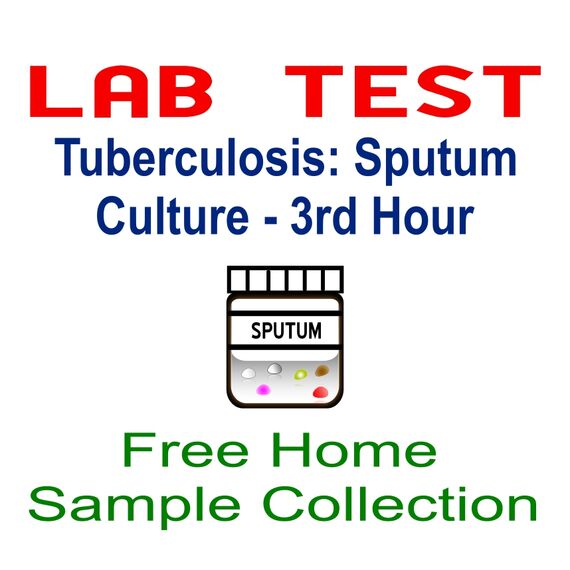This test is aslo known as Sputum Test, Respiratory Culture, Bacterial Culture, respiratory, Bacterial Sputum Culture.
A sputum culture is a medical test that looks for bacteria and other germs to help diagnose an infection in your lungs or airways (respiratory tract). Healthcare providers frequently use sputum cultures when diagnosing and following up with people who have serious respiratory illnesses such as pneumonia and tuberculosis. They don’t usually use sputum tests if they suspect a viral infection. They only use them if they suspect you may have a bacterial or fungal infection.
Input your data
The symptoms of lung infections may include:
- Mucus-producing cough.
- Fever or chills.
- Shortness of breath (dyspnea).
- Chest pain that worsens when you breathe deeply or cough.
- Fatigue.
- Confusion.
Based on the above symptoms your healthcare provider may perform sputum cultures to assess if there’s an infection in your lungs or airways and if so, what type of germ causing it. Your provider may use the test in the diagnosis, treatment planning, and monitoring of several kinds of lung conditions.
1. Diagnosis: Diagnosis is the process of finding the cause of a patient’s symptoms. A sputum culture test is often involved in diagnosing infections in the respiratory tract. These common infections can be caused by various types of germs, and a sputum culture test can determine if an infection is bacterial or fungal. Sputum cultures are frequently used in the diagnosis of several conditions, including:
Pneumonia: A sputum culture test can often determine the underlying cause of different types of pneumonia, a kind of lung infection that is a leading cause of death worldwide.
Tuberculosis: Sputum cultures can detect tuberculosis, which is an infection with a specific bacteria in the lungs that can spread to other parts of the body if left untreated.
Bronchiectasis: A sputum culture test can also help identify the cause of bronchiectasis, which is a weakening of the airways that reduces the ability of the lungs to function.
2. Treatment planning: The treatment planning for patients with lung conditions may involve the use of a sputum culture test. Knowing the cause of an infection allows doctors to select the most appropriate treatment for a patient. In some cases, a sputum culture may be used for susceptibility testing, which involves testing to see how germs in the sample react when they are exposed to different drugs.
3. Monitoring: Your healthcare provider can use sputum testing to track your condition over a period of time. A sputum culture test aids your helthcare provider to assess if an infection has improved or worsened & that tells your doctor whether a prescribed treatment has been effective.

Coughing and spitting into a cup: The most common method of obtaining a sputum sample is by coughing deeply and then spitting the phlegm that comes up into a sample cup. This is generally the least invasive method of sputum culture testing.
Prior to testing, talk with your doctor about the type of sputum culture test that you are having and the preparation that is required. Make sure to carefully follow any pretest instructions provided by your doctor.
None
Dummy Test
Sputum.
Sample report in a format
Aucun avis trouvé


